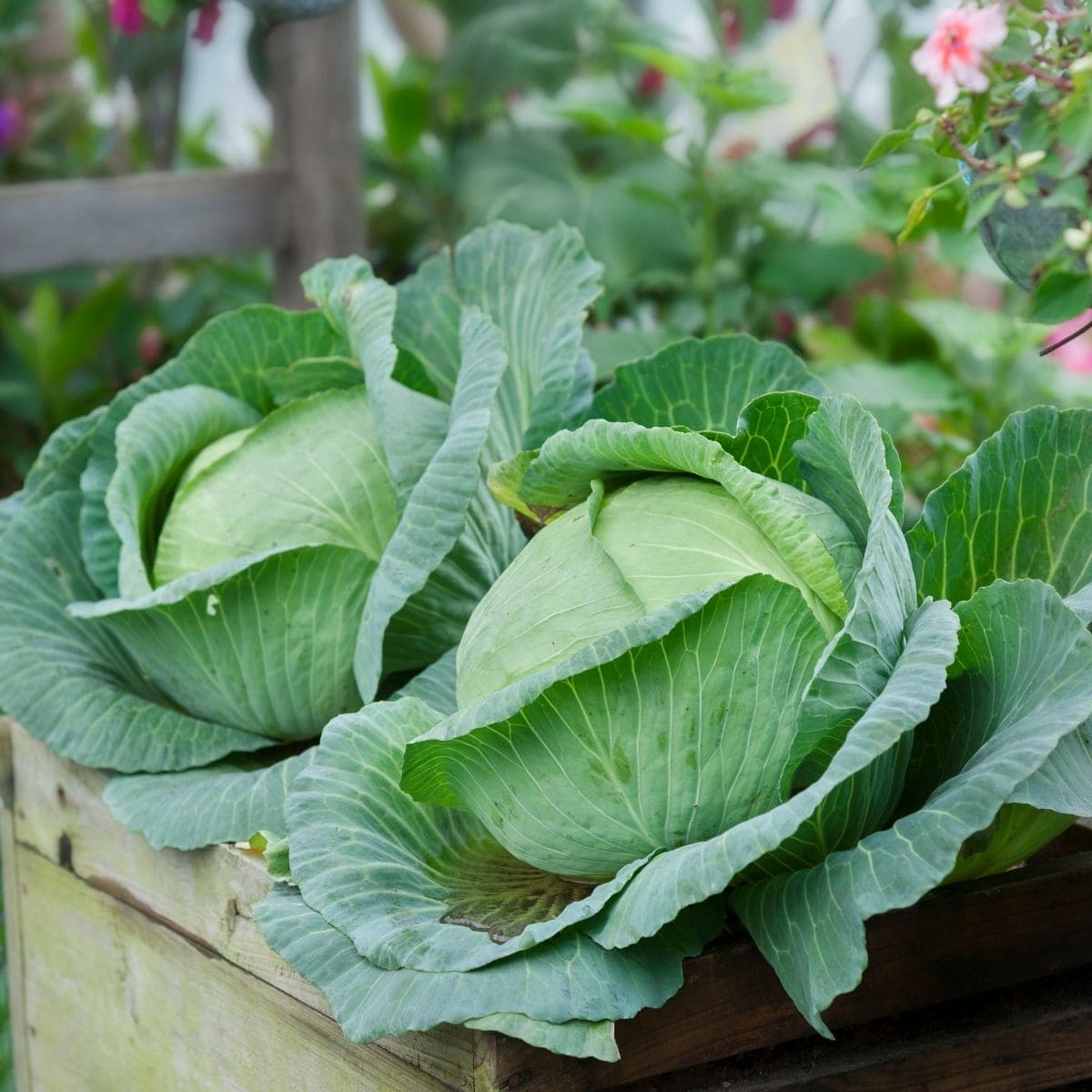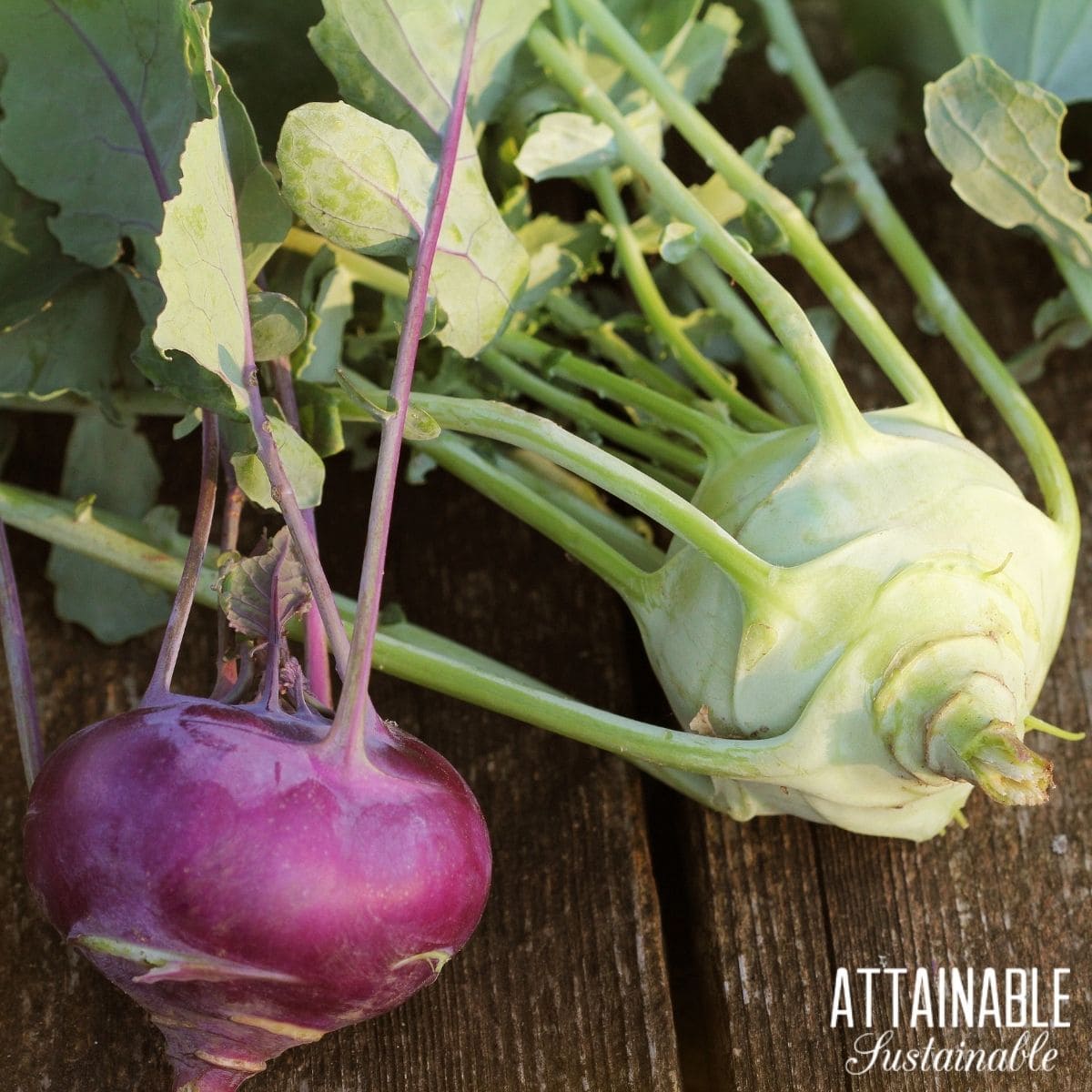Some of the most familiar crops to shoppers and home gardeners, brassica vegetables are incredibly healthy as well as versatile in the kitchen. If you’re planting a garden, you have to give some of these veggies a try!
Be sure to check out this collection of easy vegetable crops to grow, too!
What are Brassica Vegetables?
These vegetables — many of which will be familiar to you — belong to the genus Brassicaceae, also known as the mustard family. Or in much of North America, cole crops.
Brassicas fall under the larger umbrella of cruciferous vegetables; all brassica plants are cruciferous but not all cruciferous vegetables are brassicas. Confused yet?
Many of the common brassica crops belong to the same genus, which further confuses things. Both cabbage and kohlrabi, for instance, are Brassica oleracea.
New to gardening? Limited on space? The 5-Gallon Garden gives you the skills you need to grow food in the space you have. Get started with your garden today!
Healthy veggies
Crops from the brassica genus are a great source of soluble fiber as well as vitamins like C, K, and beta-carotene.
Grow Some Greens!
Ready to grow fresh greens, no matter WHERE you live? Sign up for my
FREE quick-start guide and start growing some of your own food!
These vegetables can be eaten raw or cooked, and some are terrific fermented, too. No matter how you choose to eat them, they are a delicious addition to a healthy diet.
There is a lot of talk about whether or not people with thyroid conditions can or should eat cruciferous vegetables. Ayla Bakar, MD at Northwestern Medicine says:
“Cruciferous vegetables are part of a healthy and balanced diet, and I encourage patients with thyroid disorders to continue eating them in moderation,” says Dr. Bakar. “You would have to consume an excessive and unrealistic amount of these vegetables for them to interfere with iodine and thus hormone production in the thyroid.”
Planting Brassicas
Brassica vegetables tend to be cool weather crops, good for planting in the spring or fall garden to help extend the harvest into the shoulder season.
These crops tend to be susceptible to one pest in particular: the white cabbage moth. Or more accurately, cabbage worms, that devour the leaves.
For spring planting, buy transplants or start seeds indoors 4-6 weeks before the last average frost date. When the weather has warmed, plant the transplants in the garden.
Brassica Vegetables to Plant
Choosing which of the brassicas to plant in your home garden will be tough — there are so many great ones to choose from!
Bok Choy
A favorite in Asian stir fries, I also like it raw as a salad ingredient. The ribs provide a delicious crunch. You can also steam it or saute it to serve as a side dish.
Related to Chinese cabbage (Brassica rapa Pekinensis group), bok choy’s dark tender leaves grow in bunches on white stalks. Its mild flavor makes bok choy a versatile vegetable to eat raw or prepare in Asian fusion recipes.
Bok choy is a cool-season vegetable that’s most often planted in cool spring weather, but can be planted when temperatures cool in fall.
Go here to learn more about growing bok choy plants.
Broccoli
Early Romans may have been the first to enjoy broccoli, but this vegetable’s popularity was slow to spread to other parts of the world. Now broccoli (Brassica oleracea) is a grocery-store staple, right up there with kale. Some clever produce companies have even started packaging the tender leaves that grow around a broccoli crown as a vegetable they call BroccoLeaf.
Go here to learn more about growing broccoli plants.
Brussels Sprouts
Brussels sprouts look like miniature heads of cabbage and it’s no wonder. This vegetable is a close cabbage relative, descending from the cabbage plants found growing wild in Europe. Brussels sprouts plants were first cultivated in Brussels, Belgium, starting sometime in the 1500s.
Brussels sprouts (Brassica oleracea) are interesting plants for gardeners to grow. The tall stalks have thick stems, large leaves and many rows of small sprouts. The edible sprouts can be as small as ½ inch in diameter or grow to about 2 inches. The smaller sprouts are typically more tender.
Go here to learn more about growing Brussels sprouts.
Cabbage
Cabbage (Brassica oleracea) has long been valued for its healthful benefits that are now backed by scientific research. Each valuable head is loaded with beta carotene, vitamins C and K and plenty of fiber.
Cabbage is the main ingredient in sauerkraut, and it can be used as a salad green, shredded on top of tacos, or made into a delicious coleslaw.
Go here to learn more about growing cabbage plants.
Cauliflower
Bright white cauliflower is the most familiar to gardeners, this cool-season vegetable also comes in colors like green, orange and purple. It’s delicious eaten raw or cooked, but be sure to try fermenting cauliflower to add to your table.
Go here to learn more about growing cauliflower plants.
 Collards
Collards
Similar to its cousin kale, collard greens are easy to grow. Both the leaves and stems are edible, and they can be eaten in all of the same ways as cabbage, spinach, and kale.
Go here to learn more about growing collards.
Kale
Touted as a super food in recent years, kale has become popular in supermarkets, farmer’s markets, and now the home garden. Kale is generally considered a cool-weather crop. It can be grown in early spring, fall, or even through mild winters in some regions. It’s delicious in this addictive kale salad!
Go here to learn more about growing kale plants in your garden.
Kohlrabi
Kohlrabi is a cool weather brassica with a bulbous stem that has a mild, sweet, and earthy flavor. It’s unusual looking, but as it grows you’ll be delighted with how it tastes! Commonly eaten raw, this crunchy veggie tastes like the stem of uncooked broccoli.
Kohlrabi (Brassica oleracea) is a cool-season crop and a member of the Brassica family that grows in early spring and late fall. Plant as soon as the soil can be worked early in the season.
Go here to learn more about growing kohlrabi.
Turnips
Turnips have been an essential root vegetable since ancient times for at least two reasons: they’re easy to grow and they store well. These turnip benefits made them an important food crop throughout Europe before they caught on with the rest of the world. The most familiar turnip (Brassica rapa) is round and white with a hint of purple on top, but turnips can be long or flat and have red, white, or yellow skin. (Head over here for even more fun purple vegetables to grow!)
Go here to learn more about growing turnip roots.








 Collards
Collards








I Swiss chard a brassicas plant…
Yes!